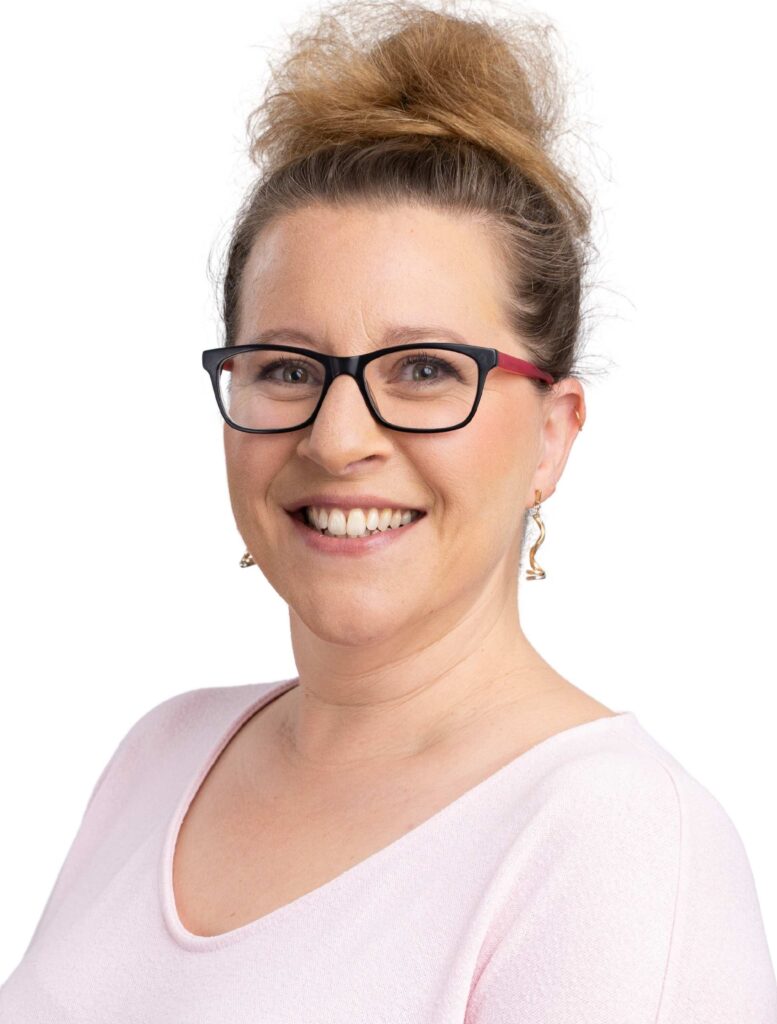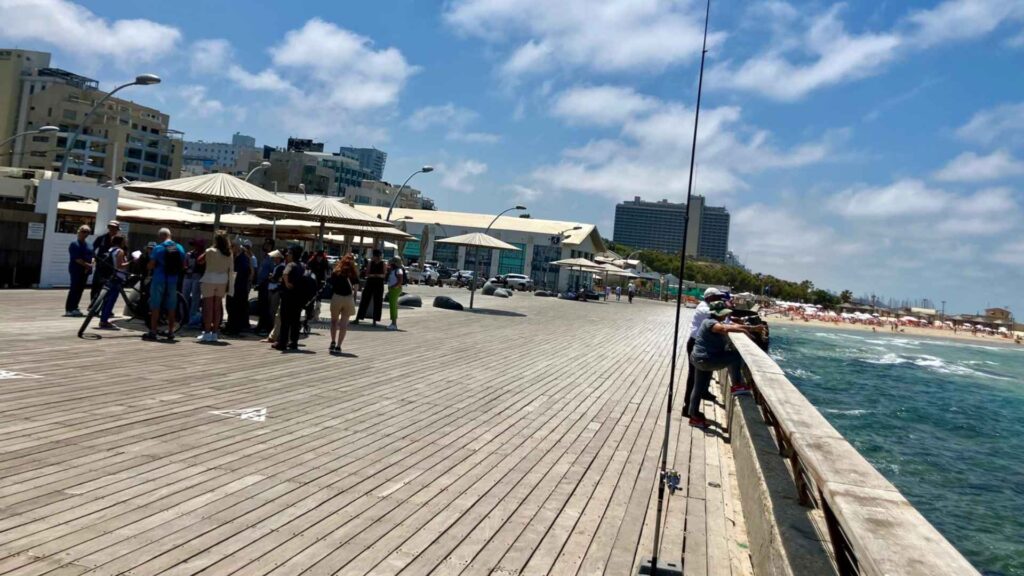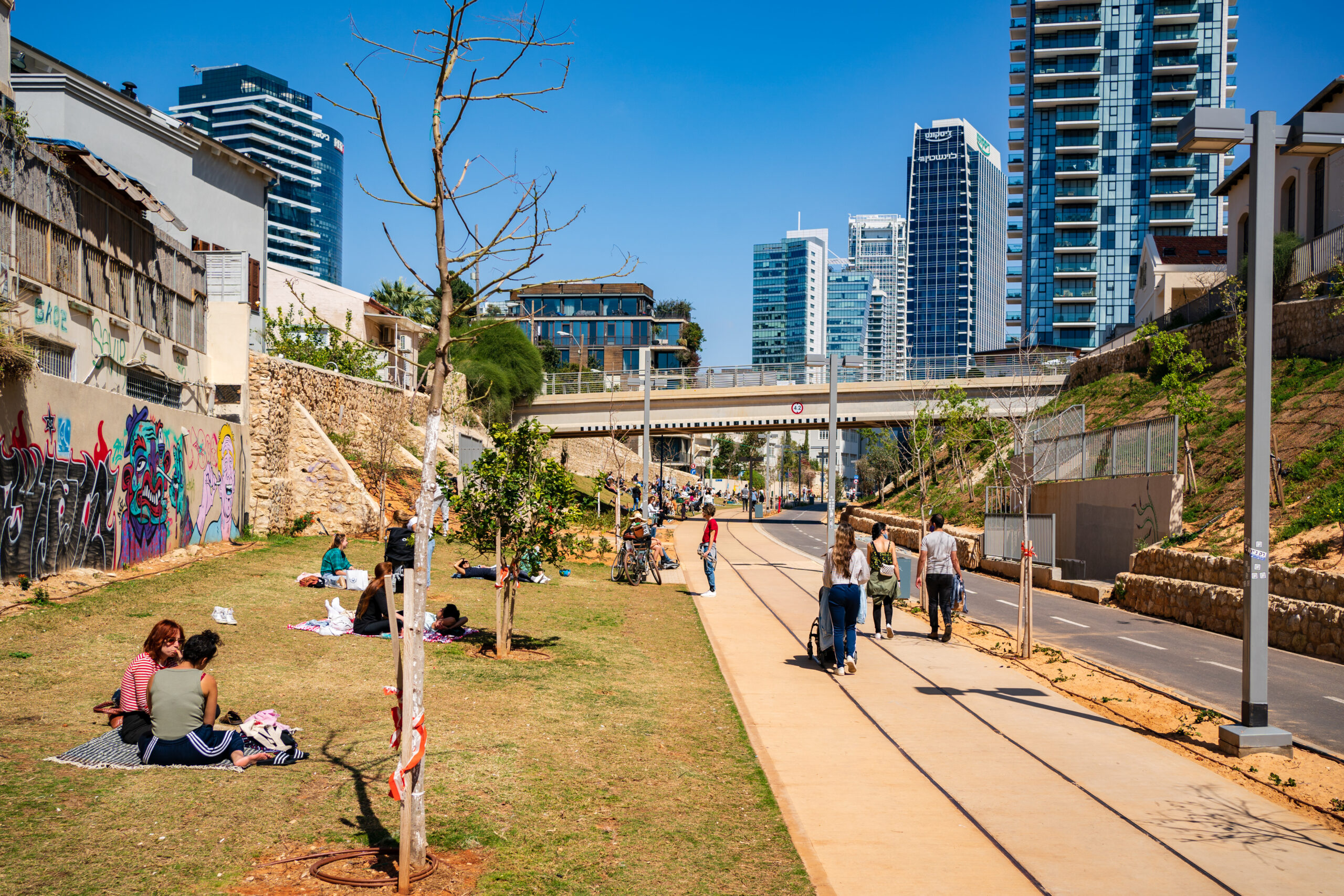Blog post by Rachel Smith-Savaya, Director of International Partnerships
Ah, Israel. Beautiful, chaotic, and never dull. Last week, alongside the daily juggling of life post-October 7, a teachers’ strike meant my kids were home. So I brought them with me to a Jane’s Walk in Tel Aviv – led by my colleagues at Adam Teva V’Din.
Inspired by urbanist Jane Jacobs, these walks celebrate cities built for people. Experiencing one with three young children was a vivid reminder of what matters most: safe, accessible public space that works for real families.

Tel Aviv: where streets meet the sea – or not
We started at Atarim Square, an outdated, overbuilt plaza that has become an empty shell awaiting redevelopment. No bathrooms, no shade – and to reach the beach? Three separate staircases. Try doing that with a stroller.
Worse still, there are plans to replace the square with two high-rise luxury towers, turning what little remains of the public corridor into a privatized zone. Instead of stairs, families would face multi-lane traffic, fumes, and long waits at crossings – just to get to the public beach that has served the neighborhood since the days when David Ben Gurion would regularly perform a head-stand.
For me, as a parent, the ‘development plan’ is no improvement…
Beaches aren’t optional
We crossed the promenade and reached the sand – where my girls could finally run free. Our guides, Attorney Ortal Sanker and Urban Planner Yael Dori, took the opportunity to share information about planned breakwaters at locations like Tzuk Beach. These structures might protect the promenade, but they disrupt natural sand movement, and are slowly shrinking our beaches. With just 1.5 cm – that’s a little over half an inch! – of beach per person in Israel (if everyone went at once), we can’t afford to lose more.
As Yael Dori explained to our group: “Israel needs smarter coastal planning – not quick fixes that cause long-term damage.”
Climate Reality in a Child’s Voice
By the time we reached the Tel Aviv Port, my children were hot, cranky, and asking the obvious: “Why isn’t there more shade?” The answer? Trees don’t grow well by the sea.
“Artificial shading is essential,” Dori told us, “especially in an era of rising temperatures and longer summers.”
Cities that welcome us all
By the end of the walk, it was clear: urban planning is a parenting issue. Whether it’s beach access, shaded walkways, or climate resilience, cities must be designed for the people who use them – especially children.
I came to this walk to balance work and family. I left reminded that our work is our future – and our children deserve a city they can grow up in, not just get through.






